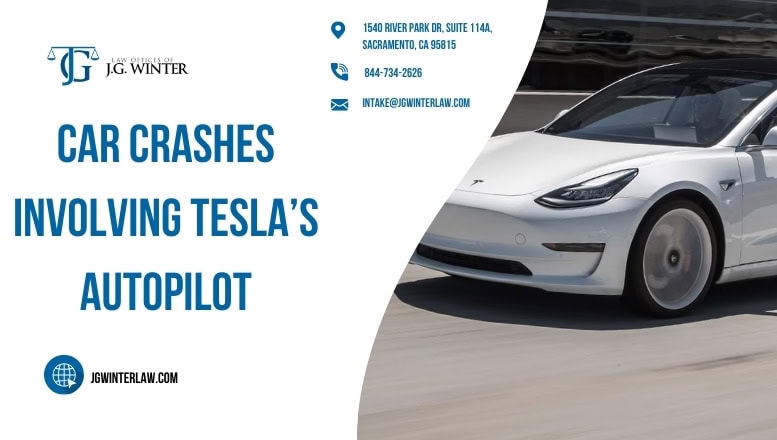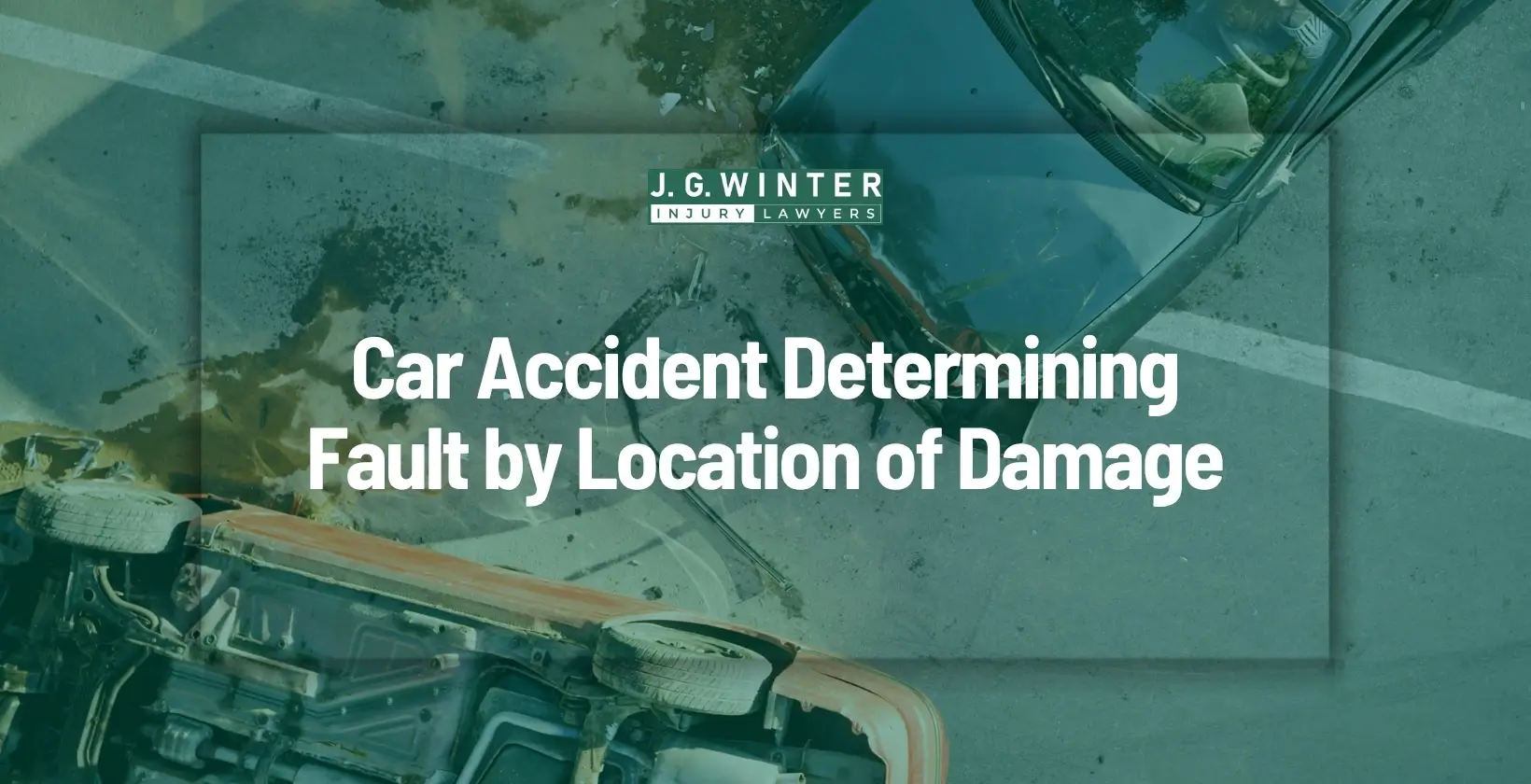Tesla’s Autopilot is a big step forward in car technology, changing the driving experience with its advanced technology. It has sparked much discussion about how safe it is and what it means for the future of driving. It’s designed to reduce driving mistakes by assisting drivers, but there are ongoing debates and concerns regarding safety with self-driving cars.
If you’re involved in a crash with Tesla’s Autopilot, understanding the legal complexities is crucial. J.G. Winter Law guides you through your rights and options, ensuring you’re well-informed and supported.
Understanding Tesla’s Autopilot technology
Tesla’s Autopilot assists drivers by taking over some driving tasks. It can control the car’s speed, keep it within a lane, and even change lanes. However, Autopilot is a driver-assist feature, not a full self-driving system. Despite its advanced capabilities, the driver must always stay alert and in control.
Statistics of car crash incidents involving Autopilot
Car crashes involving Tesla’s Autopilot feature have drawn attention to the safety of autonomous driving technologies. While Tesla asserts that Autopilot reduces the likelihood of accidents, incidents have occurred, sparking discussions about the technology’s safety and reliability.
- Since 2019, Tesla’s Autopilot has been involved in 736 crashes in the US, including 17 fatal ones, with 11 fatalities since May 2022.
- The past four years have seen a significant increase in accidents involving Tesla’s Autopilot, raising safety concerns about driver-assistance technology. (Source: LinkedIn)
- Tesla vehicles accounted for nearly 70% of reported crashes involving advanced driver-assist systems between June 2021 and May 15, totaling 273 reported incidents.
Although these statistics are concerning, reports suggest that Autopilot technology has led to a 40% reduction in crash rates. It demonstrates the potential of technology to improve road safety and reduce accidents.
The safety debate: Autopilot and driver responsibility
Tesla’s Autopilot system helps with steering and braking, making driving safer. However, it also raises concerns about how much we should rely on technology while driving. The key issue is finding the right balance. Autopilot can reduce accidents caused by human mistakes, but it’s not perfect. Drivers must stay alert and ready to take over if needed. Educating drivers about when and how to use Autopilot properly is important. This way, we can enjoy its benefits without forgetting the importance of staying involved and cautious behind the wheel.
Legal and ethical implications
When a car crash involves Tesla’s Autopilot, legal and ethical questions arise. Legally, it’s challenging to decide who is at fault: the driver, the company, or the technology itself. These incidents test our laws on responsibility and technology. Ethically, there’s debate on how much we should depend on machines for tasks like driving. It’s crucial to ensure these technologies are safe and reliable before they are widely used. Companies must be transparent about their limits and educate users properly. Balancing innovation with safety and ethical responsibility remains a priority.
Future of Autopilot and Autonomous driving
The future of Tesla’s Autopilot and autonomous driving looks promising but comes with challenges. As technology advances, we can expect more sophisticated systems that could make driving safer and more efficient. However, the journey faces hurdles, including regulatory approvals, technology reliability, and public acceptance.
Governments and companies must work together to set clear safety standards. As these technologies become part of our daily lives, society will need to adapt to new ways of commuting, and this will have implications for job sectors like transportation. Ensuring the ethical use of these technologies will be crucial as we move forward.
Wrapping up

As Tesla’s Autopilot and autonomous driving technologies evolve, they bring incredible potential and complex challenges. Navigating these advancements requires a careful balance of innovation, safety, and legal considerations. For those involved in Tesla’s Autopilot car crashes, understanding these dynamics is crucial. J.G. Winter Law has expertise in personal injury claims and a deep understanding of emerging automotive technologies. Our Sacramento car accident lawyers provide exceptional guidance and support to secure your rights and fair compensation. If you need legal assistance related to a car accident due to autopilot, contact us today.
FAQs
How many crashes has Tesla Autopilot had?
Since its launch in 2014, Tesla’s Autopilot system has been involved in over 700 crashes, with at least 19 being fatal, including specific incidents like the Banner crash. This information comes from an analysis conducted by The Washington Post on federal data.
Did Tesla crash due to Autopilot?
There have been instances where Tesla vehicles crashed while the Autopilot system was engaged. These crashes have sparked discussions on the safety and operational limitations of Tesla’s partially automated driving system.
Who was the Tesla driver killed in the crash with Autopilot active?
Pablo Teodoro III, aged 57, tragically lost his life in a crash involving his Tesla and a crossing tractor-trailer while the Autopilot system was active. This incident raises significant safety concerns about the use of Tesla’s Autopilot system, marking it as the third similar accident since 2016.
Is Tesla Autopilot actually safe?
While Tesla asserts that Autopilot enhances vehicle safety through advanced driver-assistance features, the system has been involved in several crashes, leading to discussions about its reliability and the need for proper usage and driver awareness.
What caused the Tesla Autopilot crash?
Tesla Autopilot crashes can result from a combination of factors, including system limitations, environmental conditions, and instances where the technology is beyond its intended operational design. Each crash involving Autopilot tends to have unique circumstances that contribute to the incident.
How does Tesla Autopilot detect obstacles?
Tesla’s Autopilot system uses a combination of cameras, ultrasonic sensors, and radar to detect vehicles, pedestrians, and other obstacles around the car. It allows the system to create a real-time understanding of the vehicle’s surroundings, enabling it to make informed driving decisions.
Are there any restrictions on where Tesla Autopilot can be used?
Tesla advises that Autopilot is intended for use on highways and limited-access roads with clear lane markings. The system is not designed for city driving or areas where lane markings are poor or non-existent. Drivers are always responsible for staying alert and maintaining control of the vehicle, even when Autopilot is engaged.




